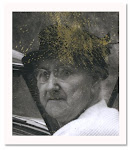A plethora of flight images for this week's Sepia Saturday.
In the late 1940s and during the Korean War my father flew seaplanes as a Naval aviator.
These first shots in black and white were taken in San Diego of a PBM utilizing JATO packs for take off. You can see the JATO rockets on the side of the plane. There were two on each side and a pilot could activate one on each side or all four at once. JATO stands for jet-fuel assisted take off. Click here to read about JATO.
The Martin PBM Mariner was a patrol bomber flying boat of World War II and the early Cold War period. It was designed to complement the Consolidated PBY Catalina in service. A total of 1,366 were built, with the first example flying on 18 February 1939 and the type entering service in September 1940. (SOURCE: Wikipedia)Click on any image to see it larger.







You can see the JATO packs in this shot.

To see a shot of a PBM in for service click here.
The second group of shots are of P5M’s in Iwokuni, Japan. I have no idea who any of the people are.
Click on any image to see it larger.



The Martin P5M Marlin (P-5 Marlin after 1962), built by the Glenn L. Martin Company of Middle River, Maryland, was a twin-engined piston-powered flying boat entering service in 1951 and serving into late 1960s in service with the United States Navy for naval patrol. It also served in the U.S. Coast Guard and with the French Navy. 285 were produced overall. (SOURCE: Wikipedia)

P5M approaching tender.

P5M refueling.

Stern of tender.
During the Second World War, both the American and the Japanese Navies built a number of seaplane tenders to supplement their aircraft carrier fleets. However, these ships often had their catapults removed, and were used as support vessels that operated seaplanes from harbours rather than in a seaway. These aircraft were generally for long range reconnaissance patrols. The tenders allowed the aircraft to be rapidly deployed to new bases because their runways did not have to be constructed, and support facilities were mobile much like supply ships for submarines or destroyers.
The German navy in World War II did not operate any seaplane tenders. However, the German air force, Luftwaffe, had 19 seaplane tenders of both large and small sizes in operation. These ships were mostly converted from existing civilian seaplane tenders, and were capable of carrying 1-3 seaplanes. The French and Italian navies also had seaplane tenders in service.
Seaplane tenders became obsolete at the end of the Second World War. A few remained in service after the war but by the late-1950s most had been scrapped or converted to other uses such as helicopter repair ships. (SOURCE: Wikipedia)To see another post about a P5M click here.
Over the years I’ve heard my father tell a lot of seaplane stories; one event during the Korean War in which only two planes took part is even mentioned in a book. The only one of his planes I was ever on was a P5M. I was a little girl and it was a huge plane. A vivid memory I'll have forever.
To see more about planes visit my other site, Tattered and Lost Ephemera, where I have been featuring vintage trading cards from the late 1950s entitled "Defenders of America".

















These make up a great set of photos. I am always amazed that seaplanes ever manage to take off. They look so cumbersome to me.
ReplyDeleteWow- what a fantastic collection! Thanks for sharing.
ReplyDeleteVery cool! Seaplanes even now seem so "cutting edge" -- so stylish and functional. It seems a shame they are obsolete.
ReplyDeleteOh yes, seaplanes rock! Next best thing besides them, are hovercrafts! Especially sailing in flight so close to the ice and when you hit an open spot of water, just float away!
ReplyDeleteGreat set of photos. I almost felt I was on board that plane taking off into the wild blue yonder.
ReplyDeleteNancy
A lovely set of photos - thanks for sharing.
ReplyDeleteFascinating photos. Sea planes are always neat, and I enjoyed learning about your Dad.
ReplyDeleteKathy M.
These photos are amazing, especially the seaplane taking off. How wonderful to hear those stories first had and have a personal memory too.
ReplyDeleteAnother fascinating post - there has been such a great crop of them this week. Sea-planes always seem slightly counter-intuitive to me, but come to think of it, so does the idea of flying itself. People can tell me a million times that science says that the difference in air pressure between the upper and lower surface of the wings can keep a 100 ton aircraft in the air, but I don't believe a word of it. It's magic.
ReplyDeleteYour seaplane from WWII is far different from the seaplanes of WWI that are in my post.
ReplyDeleteA terrific collection of a most unusual airplane. Photos from my dad's army career were always trucks. Nothing cool like this.
ReplyDeleteAbsolutely excellent collection! I have a soft spot for found photographs of aircraft. This is a special craft in a special situation.
ReplyDeleteSadly when the water heater broke over a decade ago most of my family photos were destroyed. I can remember taking handfuls of my dad's old shots of his planes and flights and throwing them away because all the emulsion was sticky and sliding all over the place. It was heartbreaking.
ReplyDeleteThose JATO pics are simply stunning!!
ReplyDelete:)~
HUGZ